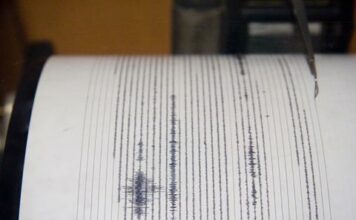Gilroy
– Gilroy High School students have always been watched, but not
like this.
Campus administrators and yard duties make an effort to be
highly visible and in the mix of students during class breaks or
passing periods. Now, there’s an electronic eye atop many of the
high school’s buildings, watching students even when supervisors
cannot.
By Lori Stuenkel
Gilroy – Gilroy High School students have always been watched, but not like this.
Campus administrators and yard duties make an effort to be highly visible and in the mix of students during class breaks or passing periods. Now, there’s an electronic eye atop many of the high school’s buildings, watching students even when supervisors cannot.
Ten security cameras were installed this summer to record disruptive or criminal behavior both during and after school hours.
But while students question the cameras’ Big Brother-like presence, some supervisors say it is simply that presence that has proven most useful, in acting as a deterrent.
“I think that’s had a big impact,” said Roger Cornia, the district’s safety officer. “We can watch so many more areas, and I think that has a lot to do with kids choosing the time and place.”
The cameras have the potential to affect student behavior inside the classroom and out, Cornia said, because the students know they are being watched.
Principal Bob Bravo said he wasn’t convinced of the connection between the cameras and fewer incidents on campus.
“We can make an assumption that the cameras are a part of that picture, but we don’t know how much, exactly, they are to account for the difference,” Bravo said.
Sitting on the roofs of several campus buildings, the cameras are quite visible, perched on metal arms so that they can be remotely swiveled where surveillance is needed.
Students said they are well aware of the cameras – and that they not only record, but are often viewed live during breaks.
Alyssa Habing, a senior, said they were a topic of conversation at the start of the year, but now she forgets they’re there.
“It doesn’t make a difference to me, I think it’s kind of ridiculous,” she said. “I don’t really think it’s doing much. I think they’re just a threat to keep people in check at school.”
Others say the campus is feeling more like a prison than a school, with discipline measures increasing every year.
“They’re definitely intimidating, especially now that we know they have night vision,” said Alex Williams, co-editor-in-chief of The Free Press, GHS’ student newspaper. The paper wrote a news story about the cameras shortly after the start of the year. “I don’t think it necessarily makes the mass of Gilroy High School feel safer, I think it’s another invasion of our privacy.”
As students became more aware of the cameras, Bravo said, rumors began to swirl that they were being watched at all times.
“I think there were some kids who maybe overestimated how many there were because these are external, and students … started thinking things inside the classroom are cameras,” he said.
Still, there is little on the GHS campus that the cameras – which cost $85,000 and were approved several years ago – are unable to capture. While they cannot see in every direction at all times, Bravo said, they can be swiveled from the monitoring station to see even beyond the perimeter of the school. The cameras can see as far away as the levee, he said, but he didn’t know if the football stadium is fully visible.
During breaks, a supervisor is on hand to watch the monitor to which the cameras feed. It will eventually be a split-screen, Bravo said, but for now, one must switch from watching one camera to another. The supervisor watches for anything out of the ordinary, any disturbance. If something comes up, the supervisor will radio other supervisors on campus.
“There’s always someone who is near to the monitor and checks on it, but not constantly,” Bravo said.
Besides being handled live, the cameras record 24 hours a day, although Bravo did not know for how long the footage is archived.
Bravo wasn’t sure if the cameras have caught any student that would not otherwise have been spotted by a campus supervisor, although Williams said some students were caught smoking. Still, Bravo said, the cameras are worth the investment and time, particularly when it comes to catching criminal activity like vandalism that might happen after school.
“I do think they were worth it because a deterrent does have value,” Bravo said. “We don’t know – they could catch something that campus supervisors don’t see.”












